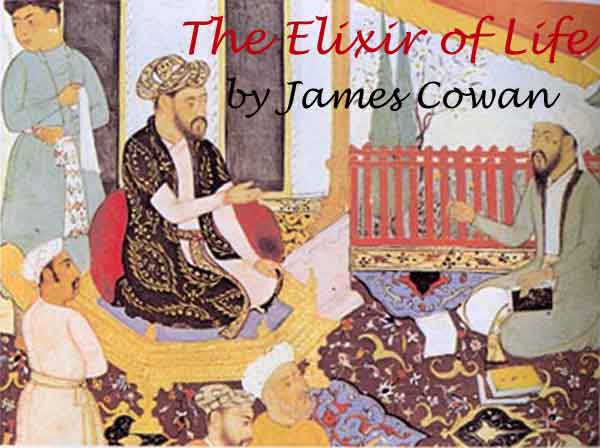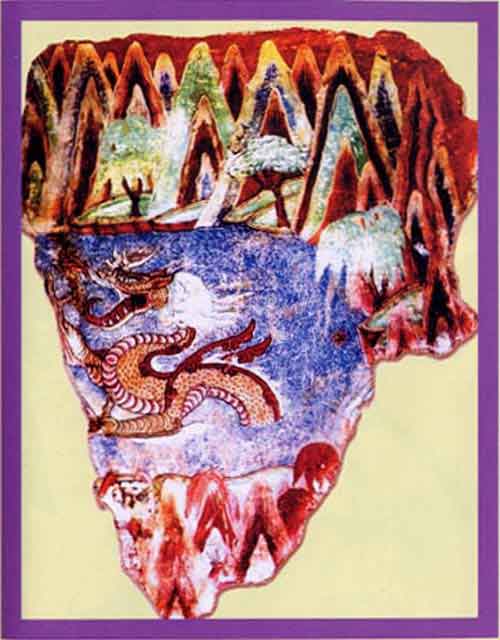
In 157- a Portuguese merchant, recently arrived in Goa on the coast of India, found himself wandering aimlessly in the bazaar one day. He had completed his business transactions with the local nabob, and was now waiting for his ship to set sail. So far his voyage had been a profitable one; he had managed to sell his goods prior to purchasing a cargo of cloves, nutmeg, and pepper from a Malaccan trader. This he hoped to sell at a considerable profit in Lisbon on his return. Since his ship was not due to depart for a day or so, the merchant decided to spend a little time in the native bazaar in the hope of picking up an object of some antiquarian value. Without at first realizing it he drifted into what appeared to be a bookshop; though the books themselves were printed on wafers of bamboo held together by a piece of string that passed through the center of each of the story boards.
The bookseller tried to interest him in a partly illustrated story from the Mahabharata, which he declined on the grounds that it was a pagan text. After peering at a number of other documents, the merchant’s eye was finally arrested by a bamboo book that revealed a number of tiny pictures of elephants in dispersed among lines of pagan script. He asked the bookseller what might be the subject of this book, to which the man replied in a quiet tone, ‘Elephants, me’ sahib. And or course the secret to eternal life.’
2
 |
His curiosity aroused, the merchant agreed to purchase the document for the sum of two Venetian ducats. But on one condition – that the bookseller provided him with a translator so that the document might be transcribed into Portuguese before he set sail for Lisbon. As the merchant planned to sell the object to an antiquarian of that fair city, he thought that it might help that its subject be made familiar for the benefit of any prospective purchaser. Meanwhile the bookseller agreed to send a scholar to his inn at first light, someone who was familiar with the Portuguese language, in order to make the necessary translation.
‘Make sure that he brings with him parchment and a sufficient quantity of nibs,’ the merchant added, presenting the bookseller with two Venetian ducats.
The following morning the scholar arrived at the merchant’s inn. Soon the man was seated by the open window with a view of the port beyond, his nibs set up in a stand on the desk. With their feathers neatly combed, they looked for all the world like ships’ masts with sails furled riding at anchor outside. Patiently, and with occasional prompting from the merchant who agreed to help when the occasional Portuguese word eluded him, the scholar was able to render a passable copy of this rather rare Treatise on the Elephant:
The elephant is the largest of all four-footed beasts. He has ankles in the lower part of his legs, and five undivided toes on his feet. His snout or trunk is so long, and in such a remarkable serpentine form, that he is able to use it instead of a hand. With it he is able to eat and drink by bringing his trunk to his mouth. He is also able to raise his keeper onto his back and uproot trees.
Beside two great tusks he has on either side of his mouth four teeth, with which he masticates his food. The tusks of the male are greater than those of a female. It is said that when he has seasoned the female, he never after touches her. The male lives upward of one hundred and twenty years; the female three score. They love rivers, hate the cold, and are never adulterous.
If they happen to meet a man abroad, they will immediately go before him and show him the way home. Though brave in battle, they show much respect for the wounded, which they carry away from the melee on their backs. It is said that they can be tamed with the juice of barley.
3
The scholar worked all day and into the night. He noted down the different kinds of elephants, their average height and color, and details pertaining to their skin, ears, and the much-prized quality of their tusks. By dawn, though suffering from fatigue, he was still carefully rendering each word on parchment as if it was an ornament of high artistic merit:
Elephants are continually at war against dragons, which desire to drink of their blood because it is very cold. To catch an elephant, a dragon must lie in wait for an elephant to pass. With the aid of its exceedingly long tail, the dragon encircles the pachyderm’s hind legs and arrests him in his tracks. Then the dragon thrusts his fire-breathing head into the elephant’s trunk, causing the animal to feel faint by drawing upon its blood. At this point the elephant tumbles to earth, crushing the snake as it falls. The dragon is split open, pouring forth the elephant’s blood and its own onto the ground. In this way the cold blood of the elephant mingles with the hot blood of the dragon to form cinnabar or Dragon’s Blood.
This, according to the sages of old, is none other than the sacred elixir of immortal life. One draught of Dragon’s Blood will grant a man courage to give up his death-seeking occupations in the hope of attaining to a state where age is of little consequence. Any man that partakes of the eternity of elephants, which is none other than the ethereal breath of cinnabar, will find himself forever beholden to these gentle beasts.
Although it was early in the morning when the scholar completed his task, it seemed like an age had passed. To the weary merchant, who had fallen asleep in the early hours and had only now just awoken, the revelation of these remarkable insights pertaining to the power of Dragon’s Blood came as a surprise. Clearly this ancient pagan text had tapped into a rich vein of occult knowledge. The merchant realized at once that he had become the keeper of eternal life even if his original motive had been one of profit. How could he sell such an item, he asked himself? How could he pass onto an antiquarian in Lisbon the secret of eternal life for the sum of a few seraphins of gold? It didn’t seem right.
‘You are aware,’ the scholar remarked, as he put down his last nib and rubbed his bloodshot eyes, ‘that this document is at once a danger and revelation to the world. It is a fact that some sentences release both their poison and their curative properties only after long years lying at rest in a discarded book. We now know that elephants, wise creatures that they are, carry within them the secret of eternal life. Are we not therefore as dragons, sucking forth their blood so that we might partake of their untimely existence?’
4
Believing that the scholar was speaking in riddles, the merchant nonetheless nodded his head in agreement. Talk of Dragon’s Blood as cinnabar, of mythical creatures gorging on elephant’s blood in the name of eternal life, such remarks struck him as the makings of a conceit for which the East was renowned. The world could do without confab-ulation, he decided. But, even as the scholar duly presented him with the a bundle of parchment pages covered in words, bowed before him, then gathered up his writing materials in readiness to depart, he decided to ask him one last question.
‘Is it true,’ he demanded, ‘that an elephant’s tusk is the product of age, or perhaps some other extreme act of comportment?’
‘Both,’ the scholar replied, as he stuffed his worn nibs into a bag. ‘In its death struggle with a dragon, the elephant relies on its memory of past encounters. There is a long history of bloodlines commingling in such extreme gestures of pathos. Sympathy, you see, is essential to the realization of consanguinity. Eternal life, and therefore the probable length of an elephant’s tusk, can only be the result of a certain temerity shown in regard to its decision to merge with another. Alone among creatures, the elephant and dragon are blood brothers. They seek to express their lives as cinnabar, as none other than what is known as the vermilion of eternal life, rather than remain committed to the contingency of individual forms. It is this that makes the elephant’s tusk such an object of value for men like us, for it alone represents the congealed breath of the dragon merging with the unusual bulk of the pachyderm. We cherish the beauty of this union of opposites, do we not? Making temperate what is hot and cold blood is another way, I suspect, of creating the smooth consistency of ivory.’
 |
5
Later, when the scholar had taken his leave, the merchant stood at the window gazing at the flotilla of ships riding at anchor in the harbor beyond. His caravel, he knew, was out there somewhere, its hull sunk low in the water. On the tide later that day it was to sail back to the Old World, along with its precious cargo.
It dawned on him then that his ship was about to transport an object of even greater worth than spices or elephant tusks. The Treatise on the Elephant, with its secret formula for the elixir of life, would surely protect him from monsoon winds or pirates on the long voyage home. Then again, if it didn’t, it may even provide him with something he hadn’t bargained for: a voyage to an unknown land where dragons and elephants continue to engage in eternal combat so that their blood might intermingle, making it possible for immortal life to settle in the residue left over from such a battle. Cinnabar, he knew, would from henceforth remain his favorite color, as well as the instrument of his survival.